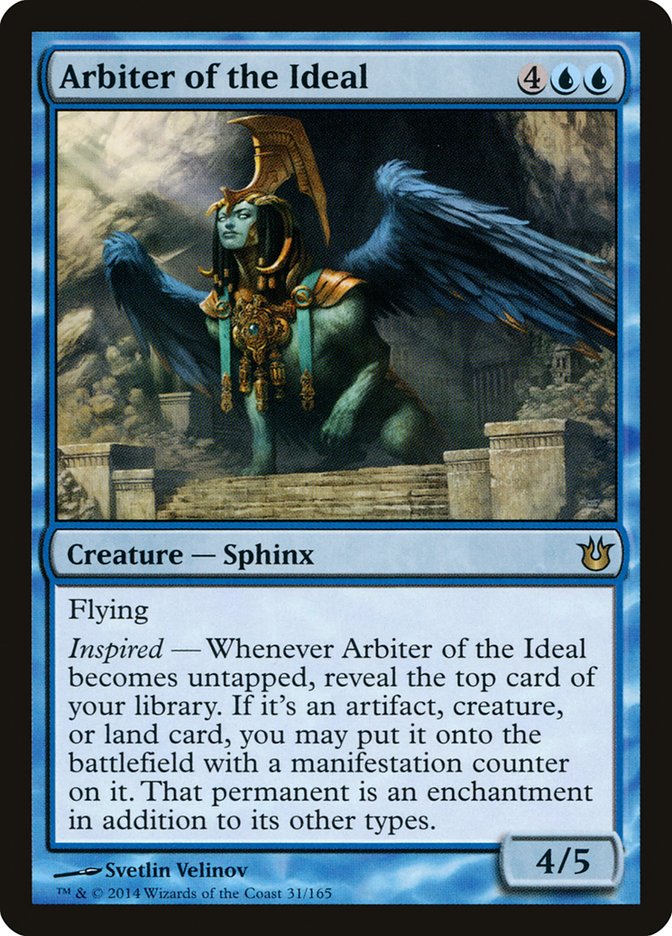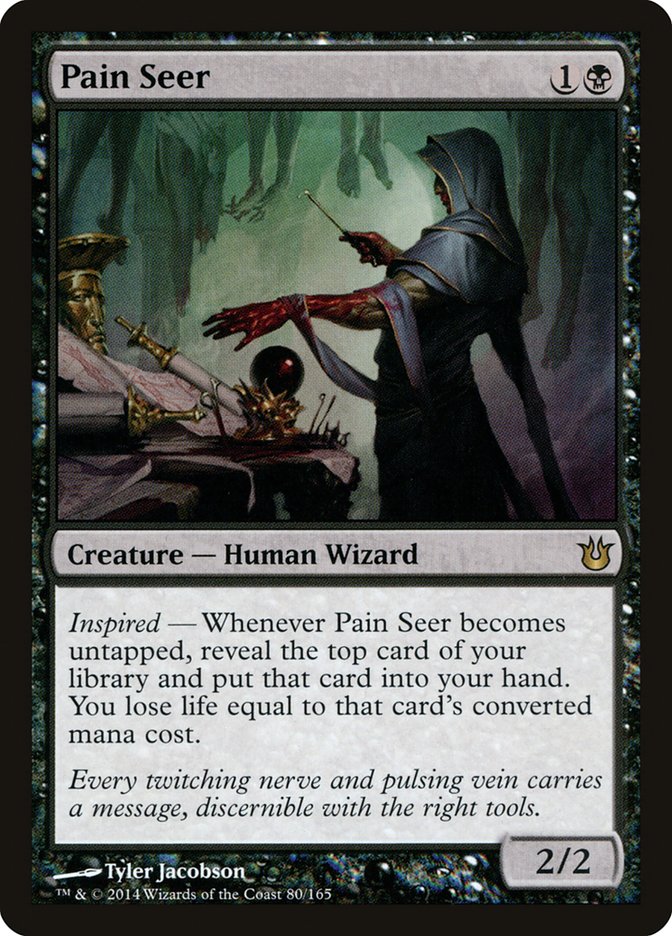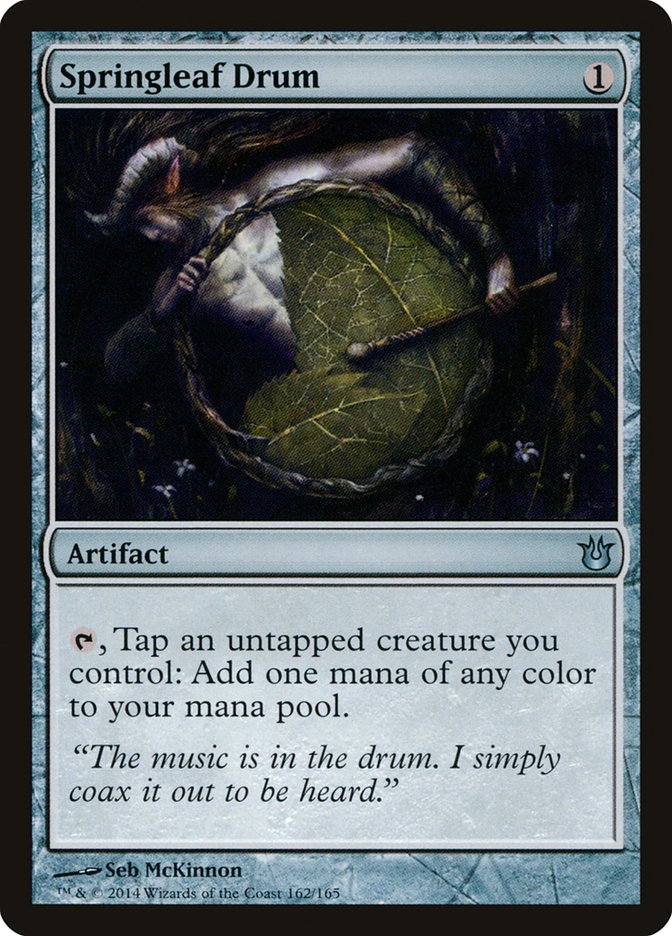That’s right—I’m starting with the most obvious "combo" in Born of the Gods for my first article on the set. I don’t expect this interaction to come as news to any of you who have been following the spoilers, but I want to talk about the significance of the interaction.
In a vacuum, inspired is an extremely weak mechanic. Yes, creatures with this mechanic can repeatedly generate some advantage over time, but think about exactly how long it takes and how much has to go right to do that.
You play your creature; it does nothing. You untap; nothing happens. You attack with your creature; nothing happens. Then if you and your creature are still alive, you untap and get whatever your creature gives you two turns after you played it.
Abilities that happen when a creature attacks look sweet, but they’re generally worse than getting something when the creature comes into play since it might not live to attack. With inspired you have to go through all the same difficulties of actually having a creature live to attack, but then it also has to survive that combat—not only that but your opponent still has their next turn to answer it before you get paid at all.
Arbiter Of The Ideal’s text may look promising—I mean, getting a free permanent every turn is an incredibly huge upside—but if you Arbiter of the Ideal on turn 6 and attack on turn 7, you don’t get your prize until turn 8, when if it’s a creature it will have summoning sickness and won’t be able to attack until turn 9. And all of that only happens if you can attack with your 4/5 flier and it lives through combat. There are exceptions, but generally when I can untap with my six-mana flier after attacking with it, I’m going to be a pretty big favorite to win the game.
Maybe the problem is just that I’m looking at a creature that’s a little too expensive. If I start with a two drop instead, perhaps it’ll seem a little better. Take Pain Seer. I play my 2/2 on turn 2; nothing happens. I untap on turn 3; nothing happens. I attack with my 2/2, and somehow the 2/2 that I’m attacking with on turn 3 that needs to live through this combat lives. I pass, and my opponent doesn’t kill my 2/2 that’s threatening to draw a card. I untap and draw a card on turn 4. Now how likely is it that I can attack and draw another card here?
Don’t get me wrong. I’d be pretty happy about a 2/2 for 1B that draws a card when it comes into play. I’d even settle for a 2/2 for 1B that reveals the top card of my library, makes me lose life equal to its casting cost, and puts it into my hand when it comes into play. I think a 2/2 cantrip for 1B is unlikely to see print, but the second one actually sounds like a card that could happen. This would be much better than Pain Seer.
Another way to think about it is to consider just how often Dark Confidant avoids combat. It’s not quite rare to attack with him, but I would argue that one of the primary strengths of the card is the fact that it doesn’t have to attack.
So inspired is a giant trap, and every card with the mechanic should be dismissed for Constructed since it’s a bunch of distracting words that promise prizes you’ll never see in a real game of Magic. Maybe, but that’s not my real point. My real point is that this is a parasitic mechanic. You’re not going to play cards with inspired "as is" because they’re just good cards. If you’re playing cards with this mechanic, it’s because you mean it and you’ve built your deck in a way to make them less slow/terrible.
Basically, attacking with your inspired creatures needs to be Plan B. If you have a Springleaf Drum in play, suddenly everything changes. I’m surprised Theros didn’t have more Plants for this mechanic—cards that let you tap your creatures to do things that would suddenly change values a lot in the context of inspire. Witch’s Eye comes closest, along with the slightly less relevant Titan of Eternal Fire, but neither of those works as well as Springleaf Drum since neither lets the creature tap the turn it comes into play. Still, Witch’s Eye has some chance to improve a little as a card in Limited once Born of the Gods is in the mix.
Anyway, with Springleaf Drum, Pain Seer is functioning essentially as a Dark Confidant with an extra toughness, which is a pretty good thing to be. I’m pretty sure Springleaf Drum won’t be the only enabler in Born of the Gods for inspire, but there’s some chance it ends up being the only one that’s playable in Constructed. If that’s the case, I’m still skeptical about Pain Seer. It’s helped by its synergy with Xathrid Necromancer and the fact that black doesn’t have many great two-drops, especially Humans. Pack Rat is kind of a special situation.
Also, traditionally Springleaf Drum has only been really good with creatures you’re not spending any mana for. Committing two mana into making a creature that is essentially just letting your mana elf function certainly isn’t the way to make a deck go fast. Sure, you’re creating a card-draw engine as well, but that doesn’t change the fact that your early game at this point has been a little on the slow side.
Overall I think Springleaf Drum into Pain Seer is a pretty good opening, but we need to evaluate how good each of those cards will be on their own since we won’t always draw them together.
As I already mentioned, Pain Seer is bad on its own. It’s good if you always have a tap outlet for it, but realistically that’s not going to happen. Still, if our deck is in the market for a 2/2 Human that likes to attack, it’s possible that the upside is high enough that we can tolerate a slightly bad rate when we don’t draw the combo if we want Springleaf Drum anyway.
Springleaf Drum isn’t a new card, so we should know something about evaluating it. It’s been pretty awesome in Affinity, where you want the cheap artifact, you have plenty of free creatures to activate it, and you care about the fact that it gives you any color of mana. In other words, we know the card can be good when everything’s going right for it. We also know that it existed in Standard before and saw very little play, so we have to figure out if things are sufficiently different now.
First of all, the mana is quite a bit worse now than it was then. Springleaf Drum is pretty exciting to me in the current Standard just as a way to help make my mana work. When I think about Human decks with Springleaf Drum and Pain Seer, I imagine a three-color deck that can function much more smoothly with Springleaf Drum as an important part of the mana base.
The issue is if you play Springleaf Drum on turn 1 and an aggressive two-drop on turn 2, assuming you don’t have another one-mana creature, you’ve basically spent your first two turns playing a single Elvish Mystic. You’ll have four mana on turn 3, but your two-drop won’t be attacking, which is likely slowing down your clock in a very real way. This is to say that the cost of taking advantage of Springleaf Drum when you’re using real creatures to activate it is far from trivial.
One way to evaluate Springleaf Drum is to think about how good it would be in the format now without cards dedicated specifically to synergies with it. For example, would Mono-Blue Devotion play Springleaf Drum? What about Nykthos Red? Esper Humans?
All of these are decks that have several cheap creatures but are also trying to cast big spells, so it makes some sense that they might be interested in creature-based acceleration. Mono-Blue has some powerful four-mana spells that it could cast on turn 3 and one cheap creature that often just sits there, so how would it be? Well, the best draw with it is turn 1 Springleaf Drum or a one-drop (it doesn’t matter which), turn 2 the other and a two-drop, and turn 3 four-drop. Ideally this would be Master of Waves, which would make four tokens.
That draw is pretty good, but I don’t think it’s enough better than just playing a one-drop, a two-drop, and a three-drop to justify the cost. Specifically, Springleaf Drum has to replace either a land or a spell. If it’s replacing a spell, it means you have less real action and less devotion and you’ll likely flood out, and if it’s replacing a land, it means you’ve either lost Mutavault (unacceptable) or you have fewer blue sources in your deck. Springleaf Drum offers blue, which mitigates the issue somewhat, but it takes blue to make blue. If you have Frostburn Weird, Island, Mutavault, Springleaf Drum, you’re not actually able to do anything, so it’s coming at the cost of some amount of consistency.
Red-based devotion decks are often looking for a little extra help splashing something, like Chained to the Rocks, don’t have a ton of one-mana plays, and would like to ramp to faster Dragons. Assuming we want to cut land, it already has Guildgates that could go since you’d have Springleaf Drum for the extra white and getting a Guildgate out of a deck is never that bad. The issue is that ramping out a Fanatic of Mogis just isn’t that exciting. Playing Chandra, Pyromaster a turn early is nice I suppose, but even that’s nothing special. While it can accelerate Stormbreath Dragon a turn early, the primary hurdle to casting that card without Nykthos, Shrine to Nyx was generally number of mana sources drawn rather than number of mana sources played anyway, so Springleaf Drum isn’t helping much there.
With Esper Humans, again it’s tricky, but ultimately I think it’s going to come down to the fact that you want your creatures to attack and block more than you want them to tap for mana and you don’t want your mana sources to rely on your creatures since you need your mana sources to cast your creatures.
Inspired goes a long way toward fixing the first problem of not having the right creatures to activate Springleaf Drum because they want to be doing other things. If we can reliably generate value out of tapping a creature, Springleaf Drum is doing double duty, which is historically what it needs to succeed. The next piece of the puzzle is going to be finding a way to build a mana base that reliably lets us cast creatures to activate Springleaf Drum without having too many mana sources with Springleaf Drum. This is a challenge, but it doesn’t strike me as insurmountable.
Ultimately I think there’s a chance Springleaf Drum and some creatures with the inspired mechanic will see play, but for the mechanic to really take off it’s going to need a few creatures that offer worthwhile rewards in Constructed and likely another solid cheap enabler.
One last concept that I haven’t touched on is the possibility to "go big" with inspired. Dark Confidant can only ever draw one card per turn (well, barring things like Paradox Haze), but Pain Seer tempts you to try to find a way to untap it extra times. We’ve already seen one card that can do this, Kiora’s Follower, but we’d still need another way to tap it again. What all of this needs is a card like Opposition (though probably not that powerful) that lets us tap a creature whenever we want. If we find a reasonable card like that, then we can start looking for ways to untap them.
All in all, I think that’s asking for a lot of pieces out of not very many cards in the rest of Born of the Gods to try to do that in Standard, but I will say that if there are any inspired cards with the right payoff we might not be far from an infinite combo that involves tapping and untapping them in Modern or Legacy.
I hope Springleaf Drum is awesome in Standard, but I’m pessimistic.



